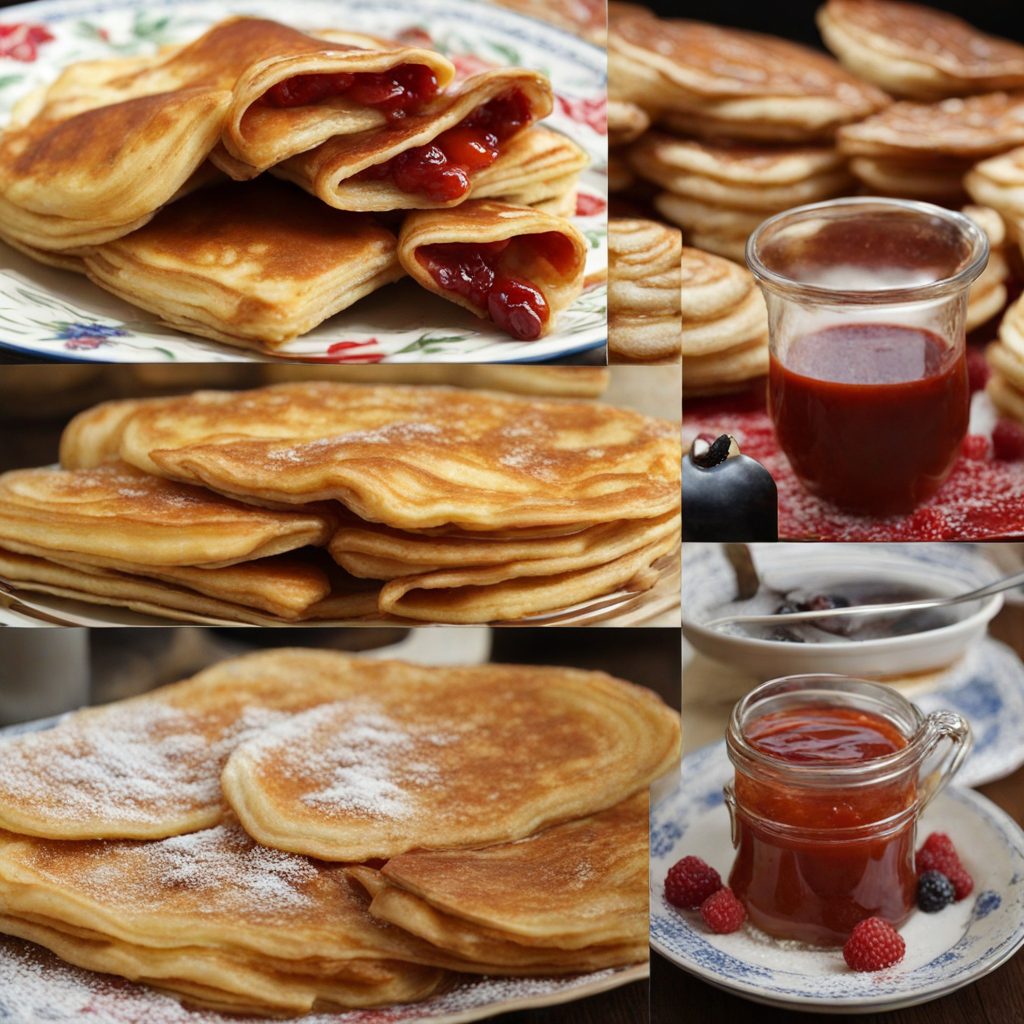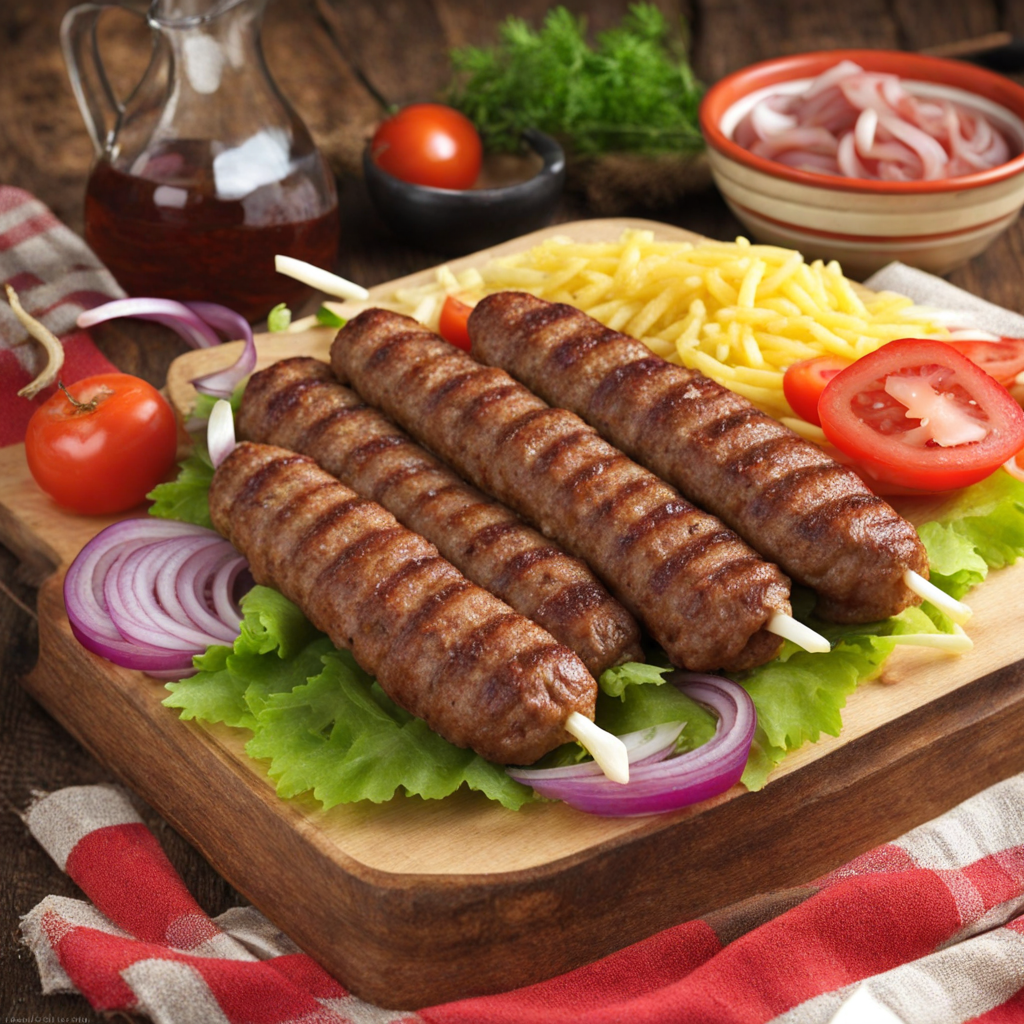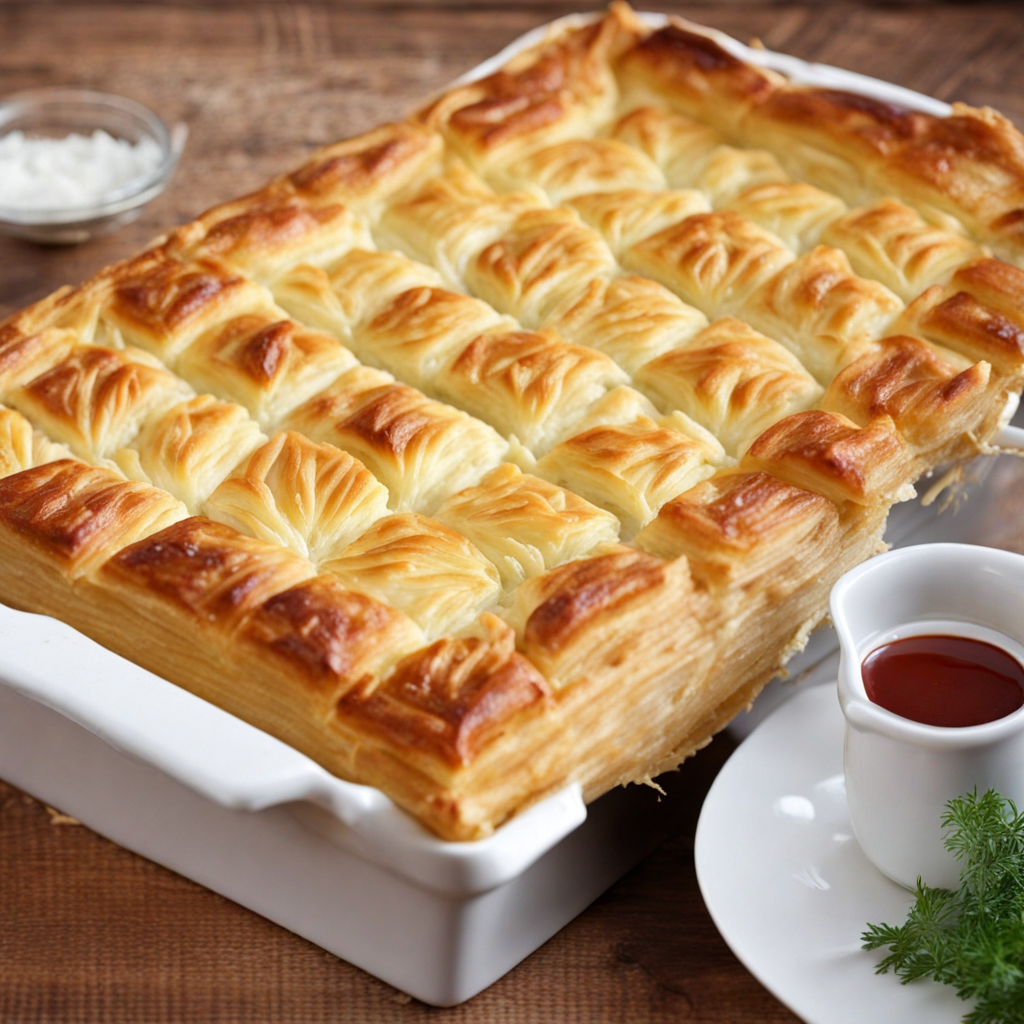Salčići
Salčići are a delightful Serbian pastry that embodies the rich culinary traditions of the Balkans. These small, savory pastries are typically made with a flaky dough that is expertly rolled out and filled with a variety of ingredients, often featuring a mixture of ground meat, cheese, or vegetables. The dough is crafted to achieve a perfect balance of tenderness and crispiness, creating a delightful contrast with the hearty fillings. Each bite offers a burst of flavor, making Salčići a popular choice for both casual snacking and festive gatherings. The preparation of Salčići often involves a careful selection of spices and herbs that contribute to their unique taste profile. Commonly seasoned with paprika, garlic, and parsley, the filling is not only savory but also aromatic, providing a depth of flavor that lingers on the palate. The pastries are usually baked until golden brown, resulting in a beautiful crust that encases the warm, flavorful filling. This makes Salčići an ideal comfort food that can be enjoyed at any time of the day, whether as a hearty breakfast, a satisfying lunch, or a delicious appetizer at a dinner party. Traditionally, Salčići are enjoyed with a side of yogurt or a savory dip, enhancing their already rich flavors. They can also be paired with a glass of local Serbian wine or rakija, making for a truly authentic culinary experience. As you savor each bite, you'll appreciate not just the taste, but the cultural heritage that these pastries represent, reflecting the warmth and hospitality of Serbian cuisine. Whether you're a seasoned foodie or simply looking to try something new, Salčići are sure to leave a lasting impression on your taste buds.
How It Became This Dish
The History of Салчићи: A Culinary Gem from Serbia #### Introduction Салчићи, pronounced as "salchitsi," are small, savory pastries that have become a beloved staple in Serbian cuisine. These delightful little snacks are typically filled with a variety of ingredients, often including meats, cheeses, or vegetables, and are renowned for their flaky, soft texture. The history of Салчићи is not just about food; it is interwoven with the cultural tapestry of Serbia, reflecting the country’s rich agricultural heritage, sociocultural evolution, and the enduring importance of communal meals. #### Origins The origins of Салчићи can be traced back to the broader culinary traditions of the Balkan region. The Balkans are known for their diverse and rich food culture, which is influenced by various civilizations, including Byzantine, Ottoman, and Austro-Hungarian. Each of these cultures has contributed to the development of local dishes, often blending flavors and techniques to create something uniquely regional. The word "Салчићи" itself comes from "salche," meaning "small" in Serbian, which perfectly encapsulates the essence of these pastries. Traditionally, they were made as a way to utilize leftover ingredients, reflecting the resourcefulness of Serbian cooks. The technique of wrapping fillings in dough is not unique to Serbia; however, the specific combination of flavors and the method of preparation has evolved over centuries, giving Салчићи their distinctive identity. #### Cultural Significance Салчићи hold a special place in Serbian culture, often associated with family gatherings, celebrations, and communal feasts. The act of preparing these pastries is a social event, frequently involving family members coming together in the kitchen. This communal aspect of cooking is a deeply rooted tradition in Serbian society, where food is more than just nourishment; it is a means of fostering relationships and building community bonds. In Serbian households, Салчићи are often served at various occasions, from casual get-togethers to festive holidays. They are a staple during major celebrations such as Christmas, Easter, and weddings. During these occasions, the preparation of Салчићи becomes a ritual, with families passing down recipes and techniques through generations. This practice not only preserves culinary heritage but also strengthens familial ties and cultural identity. Moreover, Салчићи are frequently found at local markets and bakeries, showcasing their popularity and accessibility. Street vendors selling freshly baked Салчићи evoke a sense of nostalgia among locals, reminding them of their childhood and the simplicity of enjoying good food made with love. #### Development Over Time As Serbian society evolved, so did the preparation and presentation of Салчиći. In the early 20th century, the availability of various ingredients increased, leading to more experimentation with fillings. While traditional Салчиći are often filled with meats like pork or beef, variations began to emerge, including vegetarian options featuring cheeses, mushrooms, and seasonal vegetables. This adaptability has allowed Салчиći to remain relevant in contemporary cuisine, appealing to a broader audience that values both tradition and innovation. The introduction of modern baking techniques and the influence of global culinary trends have further transformed Салчиći. With the rise of the internet and social media, many Serbian chefs and home cooks have begun sharing their own unique interpretations of Салчиći, incorporating international flavors and ingredients. This fusion has led to the emergence of creative varieties, such as Салчиći with Mediterranean spices or Asian-inspired fillings. In urban areas, Салчиći have also made their way into gourmet restaurants, where chefs elevate the dish by using high-quality, locally sourced ingredients and artistic presentations. This evolution illustrates how traditional foods can adapt to modern palates while retaining their cultural significance. #### The Recipe: A Reflection of Tradition The traditional recipe for Салчиći typically involves a simple dough made from flour, water, and fat (often butter or lard). The dough is rolled out thinly and filled with a mixture of ingredients before being shaped into small parcels and baked until golden. The fillings can vary widely, with some of the most popular combinations including: - Cheese and Spinach: A savory mix that showcases the bounty of Serbian farms. - Ground Meat: Often flavored with spices like paprika and pepper, this filling is a nod to the region's meat-centric cuisine. - Potato and Cheese: A hearty option that highlights the comfort of home-cooked meals. The process of making Салчиći is as significant as the final product. Kneading the dough, preparing the fillings, and carefully wrapping each pastry fosters a sense of connection to the past, as cooks remember the hands that have shaped their culinary heritage before them. #### Conclusion Салчићи are more than just a tasty snack; they are a symbol of Serbian culture, history, and community. From their humble origins to their modern-day interpretations, these delightful pastries reflect the resilience and creativity of Serbian cooks throughout the ages. They stand as a testament to the power of food to bring people together, bridging generations and enriching lives through shared experiences. As global interest in Serbian cuisine continues to grow, Салчиći remain a cherished part of the culinary landscape, inviting both locals and visitors to partake in a delicious slice of Serbian tradition. Whether enjoyed at a family gathering or purchased from a local bakery, Салчићи embody the spirit of Serbian hospitality and the joy of communal dining, ensuring their place in the hearts and homes of many for years to come.
You may like
Discover local flavors from Serbia







